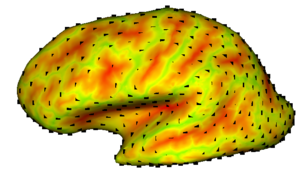Difference between revisions of "Projects:CorticalCorrespondenceWithParticleSystem"
| Line 49: | Line 49: | ||
= Publications = | = Publications = | ||
''In Print'' | ''In Print'' | ||
| − | * [http://www.na-mic.org/pages/Special:Publications?text= | + | * [http://www.na-mic.org/pages/Special:Publications?text=Projects%3ACorticalCorrespondenceWithParticleSystem&submit=Search&words=all&title=checked&keywords=checked&authors=checked&abstract=checked&sponsors=checked&searchbytag=checked| NA-MIC Publications Database] |
= Key Investigators = | = Key Investigators = | ||
Revision as of 00:53, 10 June 2008
Home < Projects:CorticalCorrespondenceWithParticleSystemBack to NA-MIC Collaborations, UNC Algorithms, Utah Algorithms
Cortical Correspondence with Particle Systems
In this project, we want to compute cortical correspondence on populations, using various features such as cortical structure, DTI connectivity, vascular structure, and functional data (fMRI). This presents a challenge because of the highly convoluted surface of the cortex, as well as because of the different properties of the data features we want to incorporate together.
Description
We would like to use a particle based entropy minimizing system for the correspondence computation, in a population-based manner. This method best suits our needs since, parametrization based methods, such as MDL or SPHARM, require a spherical parametrization of the surface, which is hard to obtain for the highly convoluted cortex surface. Another advantage of using the particle based correspondence technique is that it does not require the surface to be of spherical topology; this means a lot less pre-processing for our method, since the brain cortex is not of spherical topology. Another strength of this method is that it would (eventually) enable correspondence computation on the subcortical structures and on the cortical surface using the same framework. We also would like to explore correspondence on the cerebellum, which traditionally is excluded from such studies (e.g. in FreeSurfer-based work).
The main disadvantage of using the particle based correspondence technique on the brain cortex is that it assumes the particles to be existing on local tangent planes, which presents a challenge for the cortex given the highly convoluted surface. We are hoping to overcome this difficulty by first ‘inflating’ the cortex surface. This way, we obtain a less convoluted, sphere-like surface, where the particles will be interacting. However, we need a 1-1 correspondence between the original cortex surface and the inflated surface, since the data to be used for correspondence, such as the the curvature, and the vascular data, lives on the original cortex surface. FreeSurfer offers a method that minimizes the distance distortion in the mapping, while also smoothing the surface. FreeSurfer also preprocesses the input surface to generate a spherical topology.
Once the framework for computing the correspondence given certain data features is established, the major challenge is to incorporate the various data forms that we would like to use together. We are planning on using structural, functional(fMRI) and vascular data, as well as connectivity (DTI). Currently, we are at testing stage using structural data, namely, point locations and sulcal depth (as computed by FreeSurfer). We know from our previous studies that correspondence can be enhanced by using local curvature in addition of point locations for objects with complex geometry. It remains to be seen whether this is the case for the cortex.
Publications
In Print
Key Investigators
- UNC Algorithms: Ipek Oguz, Martin Styner
- Utah Algorithms: Josh Cates, Tom Fletcher, Ross Whitaker
